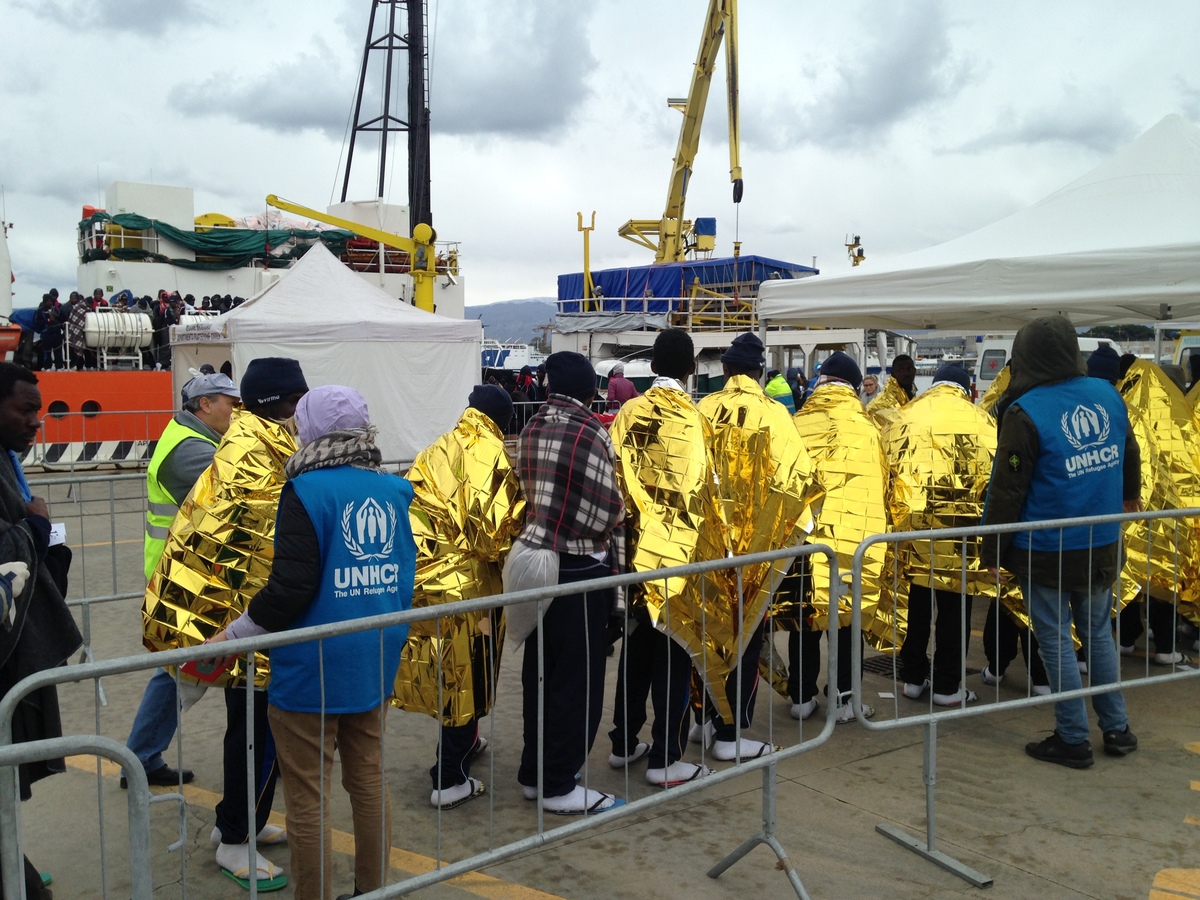Second quarter asylum statistics: sharp downward trend continues
Second quarter asylum statistics: sharp downward trend continues
The number of people seeking asylum in industrialized countries continued its sharp downward trend during the second quarter of 2004, reaching the lowest level for 17 years. A total of 86,800 asylum applications were submitted in the 30 industrialized countries covered by the latest UNHCR report, a drop of 8 percent compared to the first quarter, which was itself 18 percent down on the last quarter of 2003.The total number of claims in all 30 industrialized countries during the first six months of 2004 is 22 percent lower than during the first half of 2003, and the monthly average for the first half of this year is at its lowest level since 1987.
The 25 European countries included in the report received 147,340 claims during the first six months of this year, a drop of 18 percent compared to the same period last year. The monthly average for European countries so far during 2004 is 24,560, the lowest since 1997, and third lowest since 1988.
In the 20 EU countries for which data is available, the drop was 7 percent compared to the previous quarter, and 16 percent compared to the same six-month period last year. The 14 "old" EU countries included in the report fell by 20 percent compared to the same six-month period last year. However, the six new EU states included saw an increase of 31 percent during the first six months of this year compared to the same period in 2003.
France received the largest number of asylum claims during the second quarter with 14,050, which was nevertheless an 11 percent decrease compared to the first quarter. The United States remained steady with 9,660 claims (a drop of 1 percent), but nevertheless rose to second place during the quarter, after the UK fell a further 13 percent to 9,210. Germany was fourth with 8,520 claims (16 percent down) and Austria fifth with 6,620 (11 percent up after a 24 percent drop in the previous quarter).
In all during the second quarter, 20 countries experienced a fall in numbers, nine saw an increase and one (Slovenia) received almost exactly the same number of applications. Only one country (Japan) saw the number of applications increase in each of the first two quarters of 2004.
The most notable increases were in new EU border states: Cyprus went up 90 percent to 2,110; Slovakia went up 52 percent to 3,839; and Poland also went up 34 percent to 1,770. In all three cases the rise cancelled out much of the decrease these countries had seen during the previous quarter. The Czech Republic, by contrast, fell by 37 percent. The steep increase in Cyprus was mostly due to a sudden surge in applications by Bangladeshis who had originally entered the country on student visas. In all, the six new EU countries listed saw an increase of 26 percent - the only region to show a major increase during the second quarter of 2004.
Russians - most of whom are believed to be Chechens - were still the top group seeking asylum, with 7,310 during the second quarter. However they dropped slightly (4 percent) compared to the previous quarter, and hit their lowest level since the first quarter of 2003. Serbia and Montenegro produced the second-largest number of asylum seekers with 5,380 applications (down 7 percent). They were followed by asylum seekers from China (down 11 percent to 4,010), Turkey (down 22 percent at 3,690) and ones from India (up 25 percent to 3,670). The numbers of Afghans and Iraqis continued to decline, but less sharply than over most of the past year. Somalis also fell heavily for the third quarter running, with only 1,771 claiming asylum in the period April to June.
So far, there is no discernible effect of the conflict in the Darfur region of western Sudan, with the number of Sudanese asylum claims standing at 760 during the second quarter (slightly less than the average quarterly figure over the past 18 months). By contrast, 188,000 Sudanese refugees have crossed the border into Chad over the past 18 months, and an estimated 1 million are currently displaced in Darfur. An additional half million Sudanese are still refugees from earlier conflicts. The great majority of them continue to reside in neighbouring countries.









